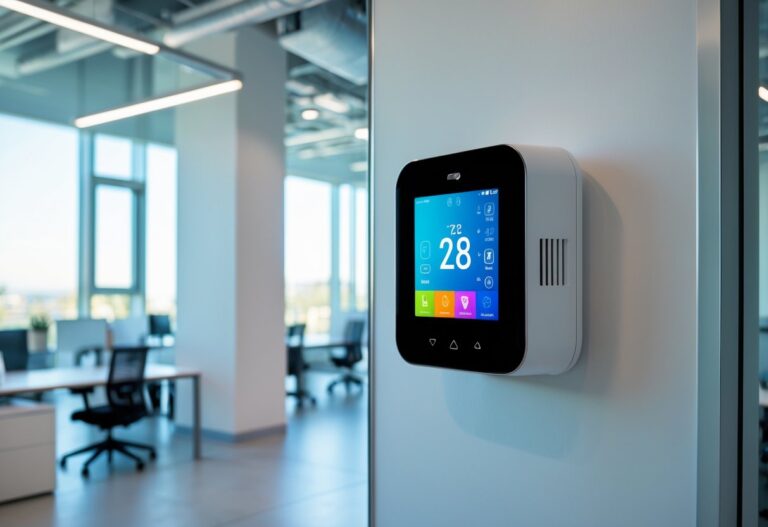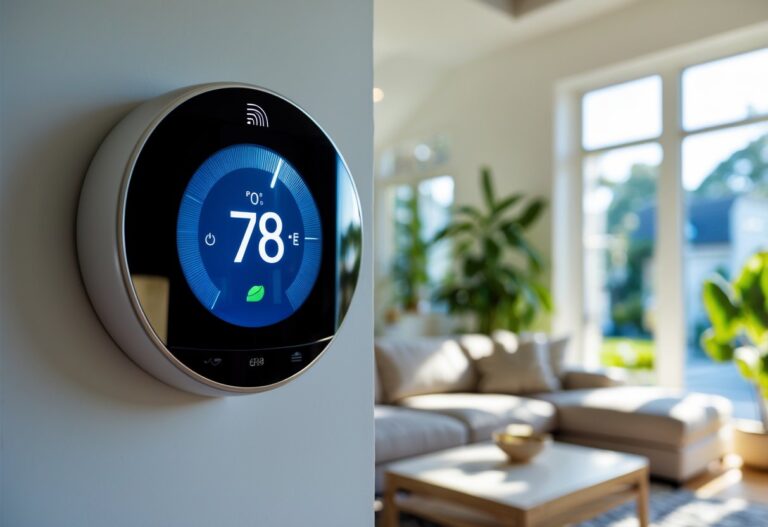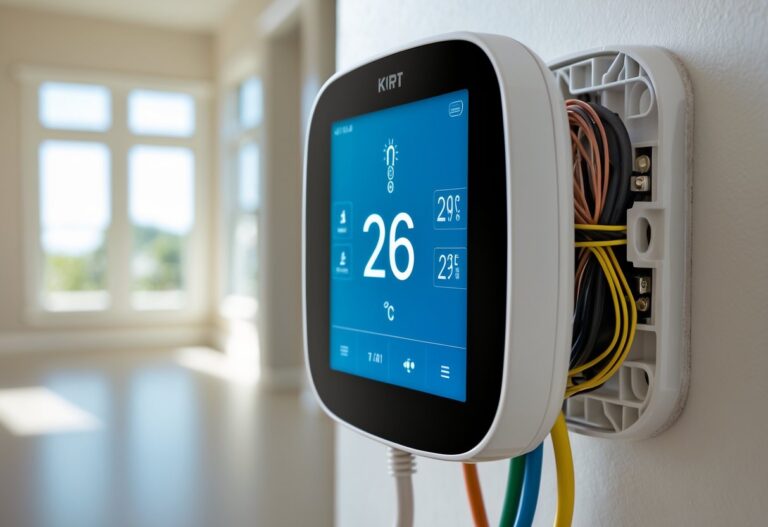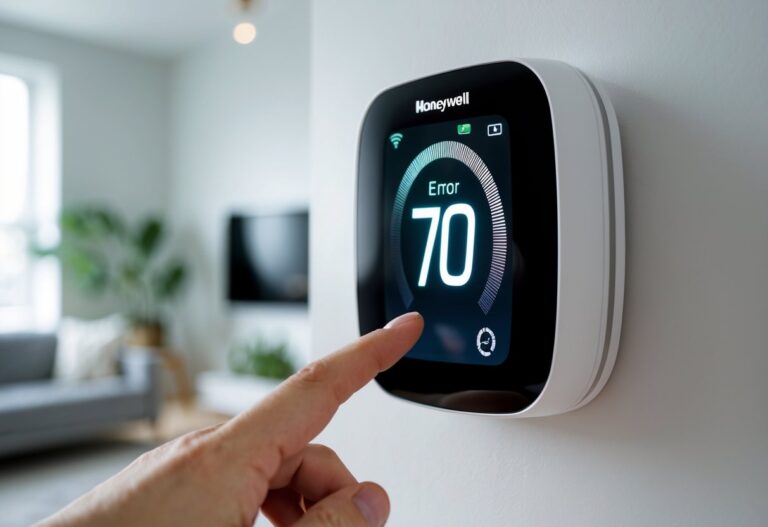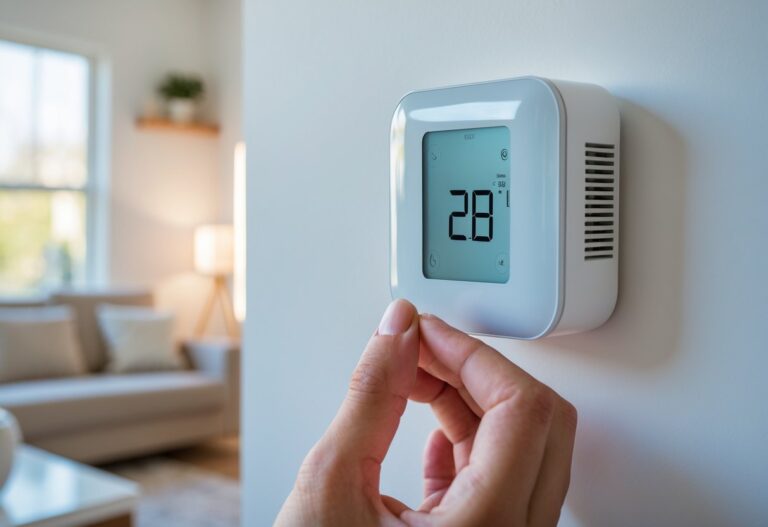Thinking about upgrading your home heating system? Many people wonder if smart thermostats can work with their old or current radiators, or if a whole new setup is needed. Smart thermostats can work with most standard radiator systems, often making your heating more efficient and easier to control.
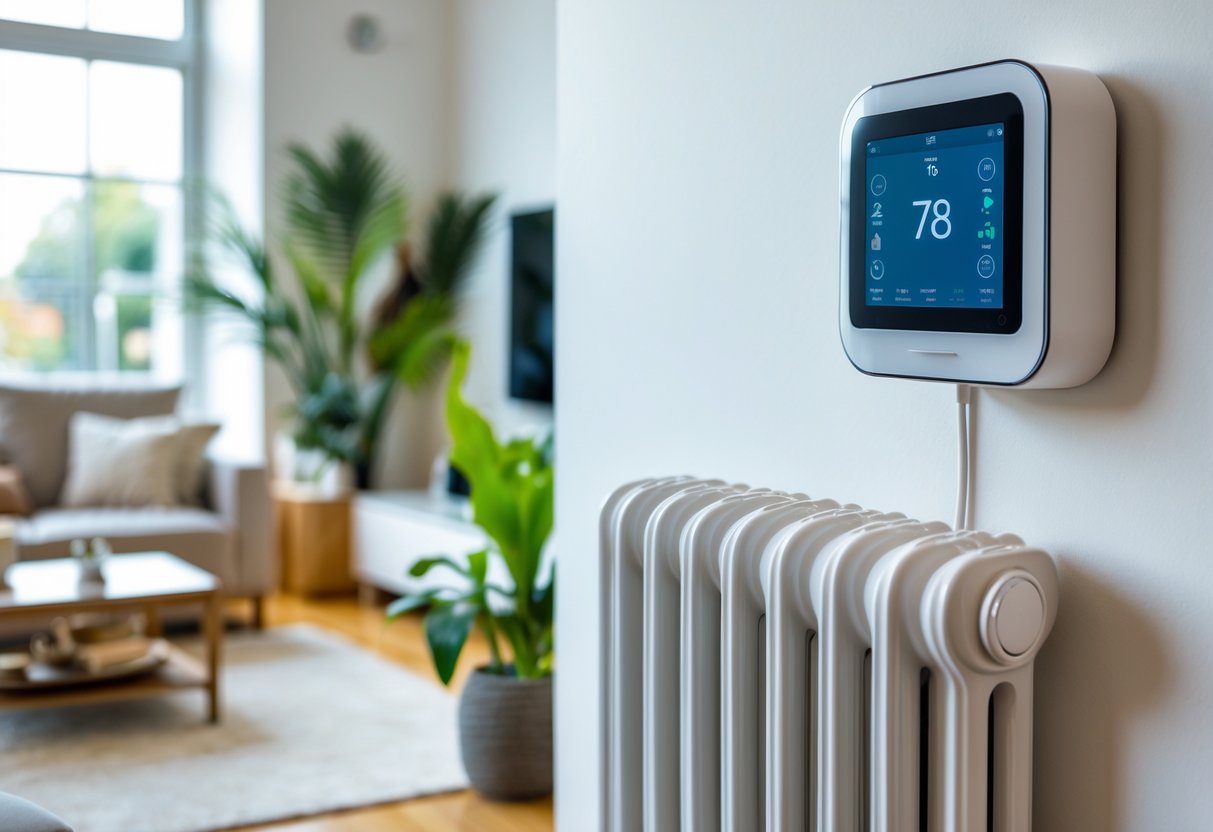
With the right setup, you can manage your home’s temperature from your phone and even create schedules for each room. Combining a smart thermostat with smart radiator valves lets you adjust the heat for each space, giving you more choice and convenience.
Key Takeaways
- Smart thermostats are compatible with many radiator systems
- You can control heating by room using smart valves
- Smart controls offer added comfort and efficiency
Smart Thermostats and Radiator Compatibility
Smart thermostats can often control radiator-based heating systems, but the details depend on how your system is set up. It’s important to know how these devices work with radiators, which valves and boilers they’ll match, and if extra wiring is needed.
How Smart Thermostats Integrate With Radiator Systems
Smart thermostats like Google Nest, Ecobee, and Tado can operate radiator-based heating systems by managing your boiler or by pairing with smart radiator valves. When you adjust the thermostat, it sends signals to the boiler, which then heats water for the radiators. Some smart thermostats allow you to control heating zones if you add compatible valves to individual radiators.
You can program schedules, adjust temperatures remotely, and sometimes control each room separately. With the right setup, your smart thermostat will help you save energy by learning your routine and adjusting heating to fit your habits. Smart radiator valves make it possible to fine-tune each room, but they’re not always included with the main thermostat and might need to be purchased separately.
Compatibility Considerations for Radiator Valves and Boilers
Not every radiator system works with all smart thermostats. First, you should check if your boiler and radiator valves are compatible. Most smart thermostats work with low-voltage (24V) boilers, such as those found in many hydronic or steam radiator systems. Older boilers, or high-voltage (line voltage) systems, might not be supported without adapters.
Radiator valves are also important. Standard manual or thermostatic radiator valves (TRVs) can often be replaced with smart versions, like Tado’s Smart Radiator Thermostats. For best results, use smart radiator valves on all radiators if you want full control, although you can also control some radiators manually if you prefer. If your radiator uses outdated or unusual valves, consult a heating specialist to determine compatibility.
Essential Wiring Requirements Like the C Wire
To install a smart thermostat, your heating system often needs specific wiring. Most modern smart thermostats need a constant power source, provided by a C wire (common wire). This wire supplies continuous low-voltage power, which is necessary for features like Wi-Fi and digital displays.
Not all homes have a C wire. If yours doesn’t, some thermostats, such as Ecobee, include adapters, while others may need a professional to install new wiring. Boiler-based systems sometimes have more complicated wiring needs. Before buying a smart thermostat, check wiring diagrams and compatibility guides from brands like Google Nest or Tado. Using the correct wiring helps prevent installation issues and ensures reliable operation of your smart thermostat and radiator heating system.
How Smart Thermostats Control Heating With Radiators
Smart thermostats work with radiators by regulating when your heating turns on or off and, with extra devices, even controlling individual rooms. The integration of smart radiator valves and the ability to link with other heating and cooling systems expand the efficiency and control you have throughout your home.
Single-Zone vs Multi-Zone Radiator Setups
In a single-zone radiator setup, the smart thermostat manages the heating for your entire home as one unit. When you set the desired temperature, the thermostat communicates with your boiler to send hot water to all radiators.
A multi-zone setup offers more personalized heating. You can install multiple thermostats or smart radiator valves, allowing you to control each room’s temperature independently. For example, systems like Tado and Ecobee support multi-zone features with compatible valves.
Key differences:
| Feature | Single-Zone | Multi-Zone |
|---|---|---|
| Control Level | Whole home | Room-by-room |
| Typical Hardware | 1 thermostat, manual valves | Multiple thermostats, smart radiator valves |
| Installation Complexity | Lower | Higher |
| Energy Savings Potential | Basic | Greater with room control |
Choosing between single and multi-zone depends on your home layout and comfort needs.
Role of Smart Radiator Valves in Room-by-Room Control
Smart radiator valves (sometimes called smart TRVs) are essential for precise, room-specific heat control. You attach these devices to your radiators, replacing the standard manual or thermostatic valves. Brands like Tado, Google Nest (with supported valves), and others offer smart valves that connect to your main smart thermostat.
These valves allow you to set different schedules or temperatures for each room. For example, you can keep bedrooms cooler during the day but warm up the living room in the evening.
You can control each valve using a mobile app or voice assistants like Google Assistant or Alexa. This increases comfort and helps reduce energy use by only heating the rooms you are using. If you already have a smart thermostat, adding smart radiator valves is a practical way to upgrade to multi-zone heating.
Integration With Heating and Cooling Systems
Many smart thermostats are designed to work not just with boilers and radiators but also with other heating and cooling systems. Models like Google Nest and Ecobee can connect to central boilers, heat pumps, and even underfloor heating. When used with compatible radiator valves and sensors, these thermostats create a unified smart heating environment.
Your smart thermostat will typically switch the boiler or heat pump on only when heat is needed in one or more zones, based on signals from smart valves. This process can save energy and ensures rooms are not overheated.
You manage everything through a central app, allowing you to adjust settings as needed from anywhere. Integration also means you can use voice controls or automate heating as part of a wider smart home routine. This flexibility is helpful if you have both radiators and systems like air conditioning or heat pumps in your home.
Benefits and Considerations of Using Smart Thermostats With Radiators
Smart thermostats can make it easier to manage your home’s heating and may lead to both cost savings and greater comfort. There are important advantages to using these devices, but it’s helpful to know what to expect before deciding if they are right for your heating system with radiators.
Energy Savings and Reduced Energy Bills
Smart thermostats are built to help you use energy more efficiently with your radiator system. You can schedule heating times so that radiators only run when needed, such as early morning or evenings, instead of all day.
Many smart thermostats let you set different temperatures for each room. Zoning means you can avoid wasting heat in empty rooms. For example:
| Room | Time Heated | Temperature Set |
|---|---|---|
| Bedroom | Night | 18°C |
| Living Room | Evening | 21°C |
| Kitchen | Morning | 19°C |
Some models track your daily routines and adjust heating based on when you are home or away. This helps to lower your energy bills by reducing unnecessary heating.
Most smart thermostats provide reports on your energy use. You can see how changes in your heating schedule affect your bills and make further adjustments. Features like remote control from a phone also allow you to turn heating on or off even when you are not at home.
Enhancing Home Comfort and Ease of Use
Smart thermostats allow you to control the temperature in each room with just a few taps on your phone or tablet. This means you can make changes to your home’s comfort without getting up or even when you are away.
Voice assistant compatibility lets you adjust settings using simple commands. You can say, “set the living room to 20°C,” and the thermostat will respond. This hands-free control is especially useful when you’re busy or have limited mobility.
Temperature settings and schedules can be changed quickly to match your routine. If you wake up early or get home late, you can update your heating plan right away without hassle.
Most smart thermostats also have easy-to-read displays and simple menu options. You do not need to be tech-savvy to use these features. If you have more than one radiator, you can make sure each area of your home is as warm as you want it to be, improving comfort for everyone.
